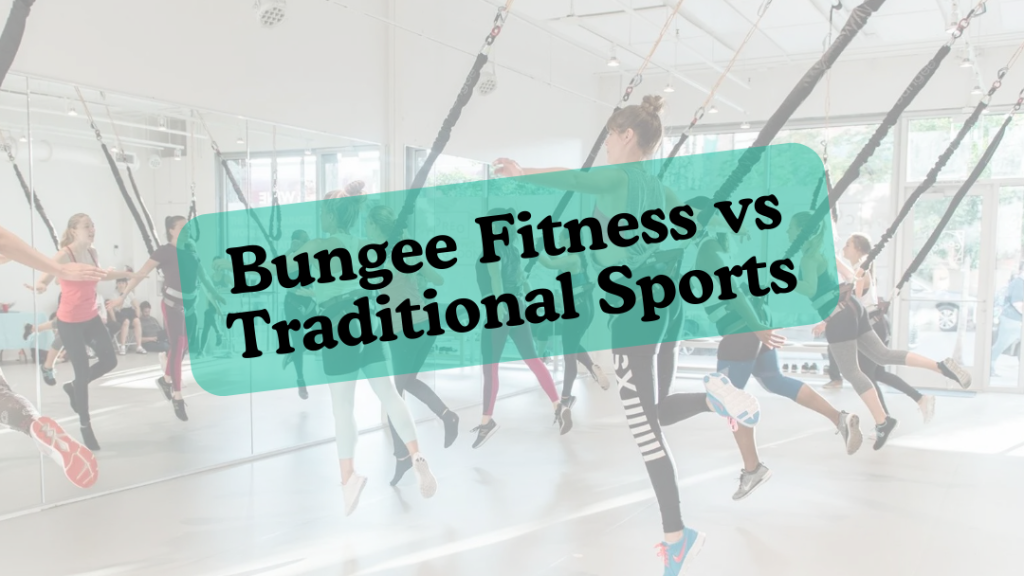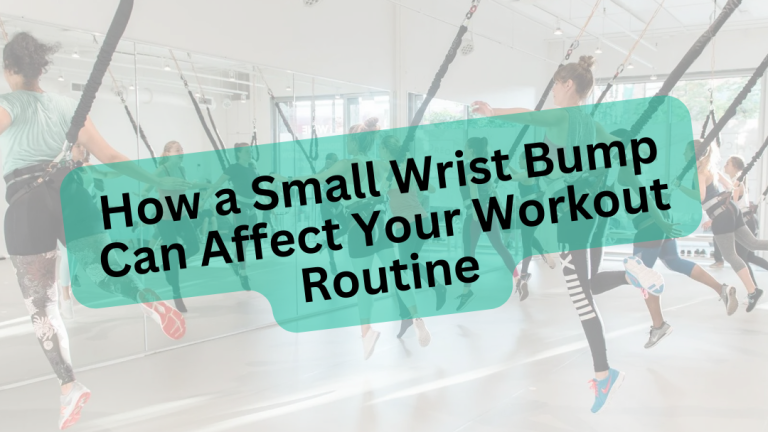Bungee Fitness vs Traditional Sports: Exploring Physical Benefits
In the past ten years, the fitness landscape has experienced a dramatic evolution. Even while weightlifting, cardio, and HIIT remain top choices, bungee fitness has risen to the spotlight, enticing exercise enthusiasts. Through the blending of aerial resistance with cardio, this weightless, high-intensity workout offers a demanding and yet still effective regimen. Be it bungee fitness or conventional exercise routines that you pursue, a host of considerations surfaces—ranging from joint stress and ease of access to overall effectiveness and even sheer enjoyment.

Upcoming sections will examine the primary distinctions between bungee fitness and conventional workouts, assessing how each aligns with specific fitness objectives and lifestyle preferences. Covering injury risks, adaptability, age-accessibility, and overall power output, this head-to-head comparison seeks to steer you toward the training format that aligns most closely with your needs.
A comparison of Bungee Fitness with Traditional Gym Workouts
Juxtaposing bungee fitness with conventional workouts calls for a clear grasp of the distinct qualities of each and the way each engages the body.
What is Bungee Fitness?
Conceived in Thailand, bungee fitness swiftly exploded into a worldwide craze that has appeared merely in recent years. The process starts by sliding into a harness connected to a bungee cord that hangs from the ceiling. Within this setting, participants execute dynamic aerial movements—lunge, squat, plank, and jumping—and elastic resistance lends support to their efforts. The fusion of strength resistance, aerobic exertion, and aerial acrobatics makes the workout both engaging and effective.
What defines Traditional Workouts?
In most fitness facilities, conventional workouts are commonly divided into three main segments: strength training (performed with free weights or machine equipment), cardio workouts (exercised on treadmills, cycling bikes, or ellipticals), and group classes including Zumba, HIIT, and spinning.
Key Difference between Bungee Fitness vs Traditional Sports
| Feature | Bungee Fitness | Traditional Workouts |
|---|---|---|
| Equipment | Bungee cords, harnesses | Weights, machines, mats |
| Impact on Joints | Low | Can be high (especially in HIIT) |
| Cardio Intensity | Moderate to high | Variable (depends on workout type) |
| Learning Curve | Moderate | Low to moderate |
| Fun & Engagement | Very high | Varies |
| Muscle Targeting | Core, legs, and upper body | Full-body or specific targeting |
Capable of boosting calorie expenditure and overall strength alike, bungee fitness and conventional workouts differ in which option suits an individual’s personal preferences, physical constraints, and specific fitness goals.
Joint loads and injury risk differ between low-impact and high-impact forms of exercise.
When assessing bungee fitness in comparison with traditional workouts, one of the most critical factors to take into account is the amount of joint loading involved and the ensuing injury risk. As our bodies heal from injuries or over the course of time, the state of our joints assumes critical importance, highlighting the importance of this comparison.
During traditional workouts, more load is imposed on the joints.
Demanding exercise types—including running, jumping, or elevated weight resistance—place substantial stress on the joints, most significantly on the knees, hips, and lower back. High-impact cardio or strength workouts may not be suitable for everyone, most notably if you have existing joint problems, arthritis, or prior injuries.
- Consistent high-impact training may give rise to:
- Knee ache tied to running and plyometric activities
- Shoulder injuries that result from weightlifting.
- Strain on the lower back arising from improper technique.
- Even when perfect technique is observed, the gradual buildup of wear and tear continues to accumulate with time.
Bungee fitness’s effect on the joints
Conversely, Bungee fitness is commended for its low-impact qualities. Across the full range of motion, bungee cords absorb most of your impulsive force and, consequently, lighten the strain placed on your joints. Thus, it offers a safer choice to:
Older adults
- Individuals recovering from a sustained injury during the healing stage
- Individuals with joint sensitivity—or who suffer from conditions such as arthritis
When you’re jumping, lunging, or holding planks on elastic bands, this added cushioning enables you to execute high-risk movements with greater safety and comfort.
Injury Prevention
By comparison, bungee fitness provides a milder environment for cardiovascular and strength training, yet still bestows all the same benefits. Thanks to the benefits detailed above, the probability of injury is greatly diminished.
- The harness-supported weight of the body
- Moves arranged to deliver a softly cushioned landing during each jump.
- Restricted range of movement
In summary, people intent on preserving their joints or mitigating a pre-existing vulnerability to injury are more apt to opt for bungee fitness rather than more conventional forms of exercise.
Accessibility:- An Option for People of Every Age and Fitness Level
No form of fitness can be assumed to suit every individual in exactly the same way. Being a novice teenager or a seasoned senior notwithstanding, the exact requirements of your fitness program will still differ according to your stage of life and overall physical capacity. In what ways do bungee fitness and conventional workouts compare with respect to accessibility and inclusivity?
Bungee Fitness Accessibility
It is by design that bungee fitness aims to be inclusive. It invites participants of every body type, age group, and fitness level. Here’s how:
Bungee workouts are beginners-friendly: many start with simple movements that gradually intensify over time. The instructors supply alternative options for beginners.
Bungee fitness provides older adults and those in rehabilitation with a soft, core-stability focused workout that makes it an ideal choice.
Body Confidence: Bungee’s graceful, gravity-defying movements foster confidence in those who might feel uneasy in conventional gym environments.
Still, the practice of bungee fitness calls for only a modest degree of balance and coordination. Although it may take novices some time to settle into the routine, thorough guidance keeps their progression under control.
The Readiness of Standard Workouts
As they are widely available, conventional exercises are, by comparison, somewhat simpler to join. It is easy to locate gyms, workout programs designed for home use, and virtual classes. Nevertheless, newcomers and participants who fulfill any of the following criteria:
Possess only minimal exposure to gym equipment.
Contending with persistent injuries or chronic pain on an ongoing basis.
Impaired mobility paired with restricted flexibility
Moreover, high-impact workouts rarely accommodate every age group or fitness level, so they tend to call for customized sessions or the guidance of a personal trainer.
Inclusivity Verdict
When weighed against traditional workouts, bungee fitness comes out ahead because it suits every age group and fitness level. Although conventional workouts are usually more budget-friendly and more readily accessible, they still provide a safe and pleasurable experience for every demographic.
Bonus:
For a complete contrast of bungee fitness and conventional workouts, we must also consider three crucial factors: caloric burn, muscular engagement, and its impact on mental well-being.
Caloric burn and weight loss
Bungee Fitness provides a potent cardiovascular workout that pairs with resistance training. Prolonged aerobic movements coupled with the unwavering support of body suspension elevate the heart rate, which, in turn, helps burn roughly 400–600 calories in each session.
Conventional workouts widen the spectrum of available routines more extensively. High-intensity aerobic or resistance workouts can deliver a calorie burn up to 600–800 kilocalories per hour.
Traditional workouts clinch the victory, despite the fact that their higher caloric burn is outweighed by the bigger effort required and the heavier strain they place on the body.
Muscle Engagement:
Owing to its prolonged balance and fluid motion against resistance, bungee training chiefly targets the core, glutes, legs, and the muscles that stabilize the body.
Traditional training enables concentrating on particular muscle groups, using either machines or free weights.
Typical workouts allow for a more precise activation of the muscles you select for bodybuilding or isolated exercise. Bungee furnishes an energetic, whole-body workout that is perfectly suited to functional fitness.
In relation to mental well-being and enjoyment.
Bungee Fitness: Fun in the air, baby! Lots of individuals note that it is both therapeutic and fun.
Traditional workouts, though highly effective, can come across as repetitive or dull to some, and become all the more unattractive once motivation wanes.
Taking the lead is bungee fitness, whose sheer fun coupled with broad mental-health benefits place it head and shoulders above all other options.
Thus, the question that remains is: Which option is the right one for you?
Placing bungee fitness against conventional exercises centers not on which option is generally superior, but on which fits your specific needs better.
Conclusion: Which One Is Right for You?
The debate of bungee fitness vs traditional workouts is not about which is better overall—it’s about which is better for you.
Choose Bungee Fitness If You:
- Want a fun, low-impact, and joint-friendly workout
- Need a beginner-friendly or senior-appropriate routine
- Are recovering from injury or managing chronic pain
- Prefer full-body movement with a twist of acrobatics
- Seek a group environment that’s exciting and motivational
Stick to Traditional Workouts If You:
- Have specific muscle-building or fat-loss goals
- Prefer structured routines or personalized training programs
- Want flexibility in scheduling or prefer solo workouts
- Enjoy lifting weights or high-intensity interval training
- Have access to a gym or home equipment
In truth, many people find success by combining both. Use bungee fitness for cardio, mobility, and core strength, while integrating traditional workouts for strength and hypertrophy. This hybrid approach allows you to enjoy the best of both worlds.
Ultimately, whether it’s the thrill of flying through the air or the satisfaction of crushing a gym PR, the real winner of bungee fitness vs traditional workouts is the one that keeps you moving, engaged, and consistent.






